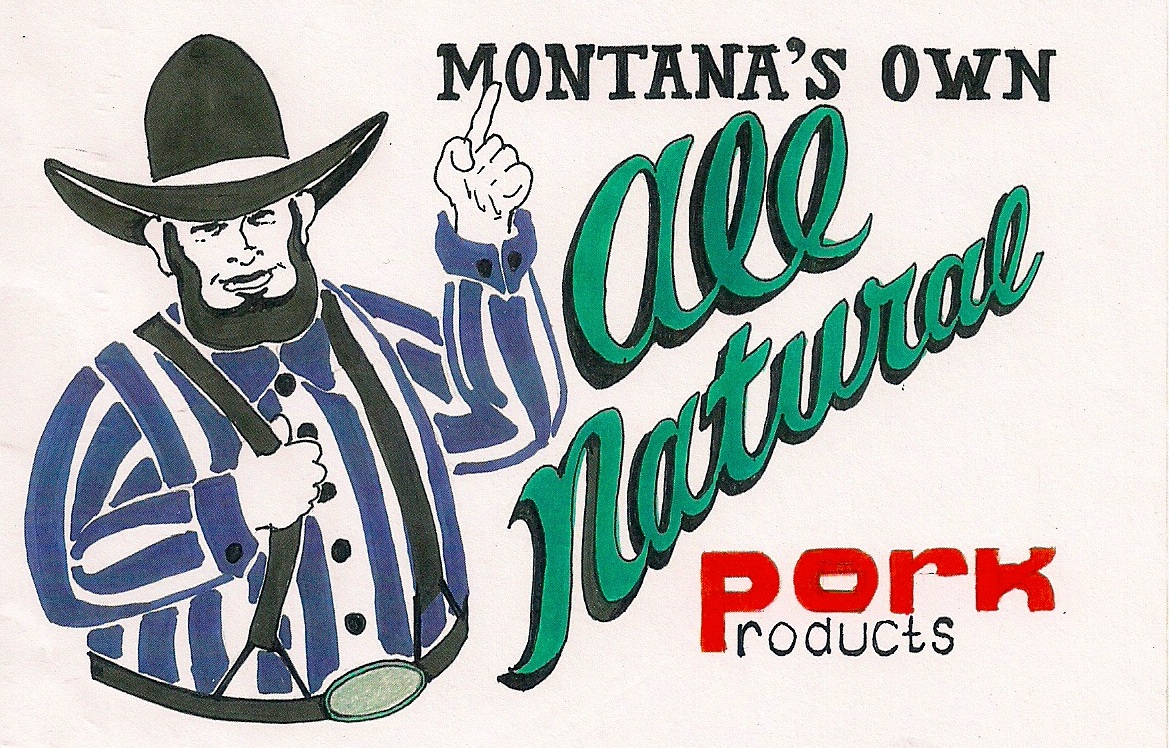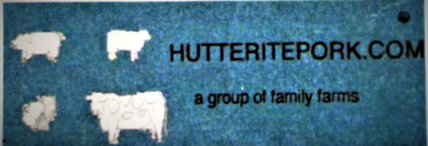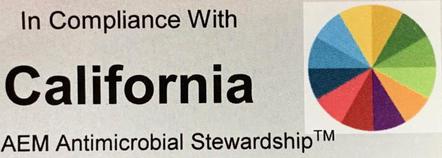Copyright 2011 - 2023 Hutterite Pork. All rights reserved
OUR PORK...
- All natural
- Always fresh, never frozen
- Processed locally in Montana
- Small family farm
- Verified by a Federal accredited Veterinarian
- Not confined, pigs can get up and walk around
- Antibiotics used only under the direction of a
 Montana licensed Veterinarian in accordance with the PEW guidelines
Montana licensed Veterinarian in accordance with the PEW guidelines
- Always treated humanely, verified by a State licensed veterinarian
FOOD for OUR PIGS: The nutritional requirements for pigs are very similar to ours. We need a little meat, some salad (alfalfa) and good fresh water. We feed what we raise and in some cases add extra minerals and vitamins.
DRUG USAGE: Antimicrobial usage is only used when the pigs
get sick. This is not often because we are isolated from most
diseases and we do not have large numbers of pigs.
If needed, the antibiotics are used according to the California
If you see this label, the farm has been certified free of any
other drug usage by a team of licensed veterinarians.
EARLY LIFE: Each sow's (mother’s) job is to produce up to 24 piglets per year (not all at one time). That many running around the mother can result in piglets getting stepped on and injury. We reduce this by various housing and pen design. Early life can be stressful especially when weaned and moved to new groups. It is just like going to kinder garden and being exposed to new food, viruses and situations. This is the time in life where extra care is needed. Environmental enrichment (toys) are provided.
IF YOU SEE THIS LABEL, the pork is from one of our farms. Our farms are in Montana, The Dakotas and Western Canada. Each farm has different genetics, feeds and management practices. However, they are all natural, well cared for with traditional hog raising practices.
INTEGRADED PATHOGEN MANAGEMENT PLAN
1. PROTOCOL (from the disease syndrome most likely encountered in the practice)
2. REFERENCES (focus on those reduces use of antibiotics)
3. DATE UPDATED (continuous quality improvement)
4. SUBJECTIVE (chief complaint, history)
5. OBJECTIVE (what is observed on current encounter
6. ASSESSMENT (DX) (list in priority)
7. PATHOGENS (including details of epidemiology)
8. PLAN (included further tests indicated)
9. TREATMENT (RX) (need directions and label, 15 requirements of VFD 2017)
10. FOLLOW UP (F/U) (4 options)
11. NOTES (clarification and detailed monitoring)
12. REVIEWER (qualifications and date signed)




